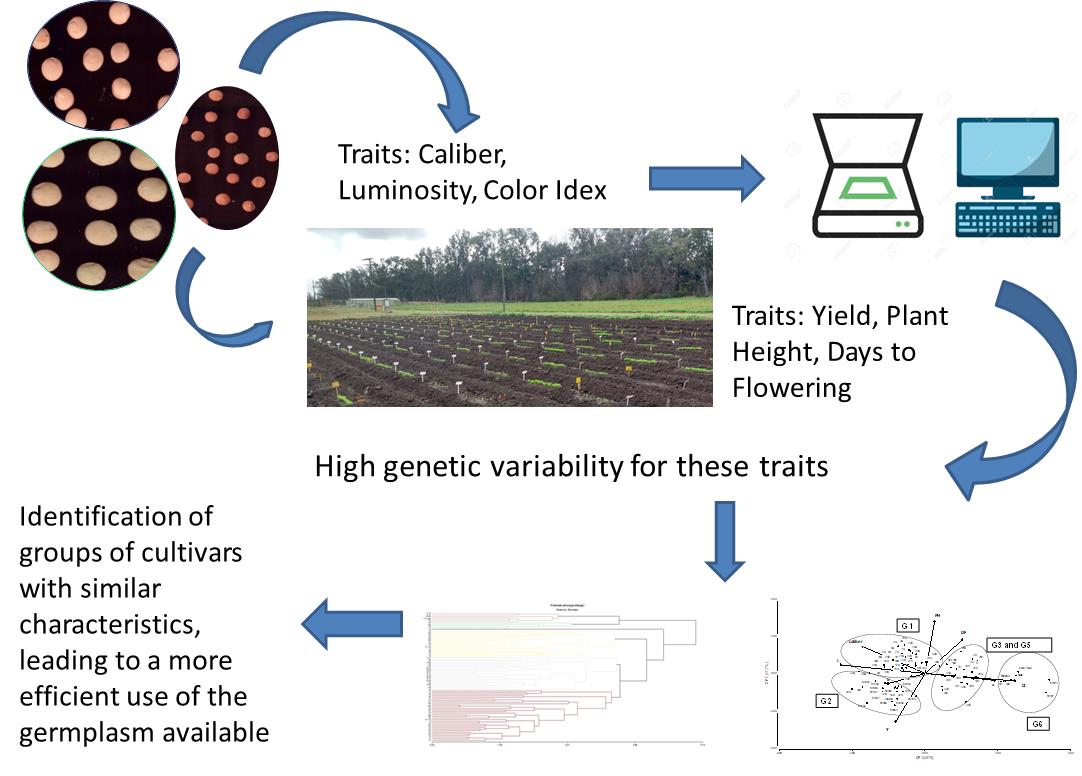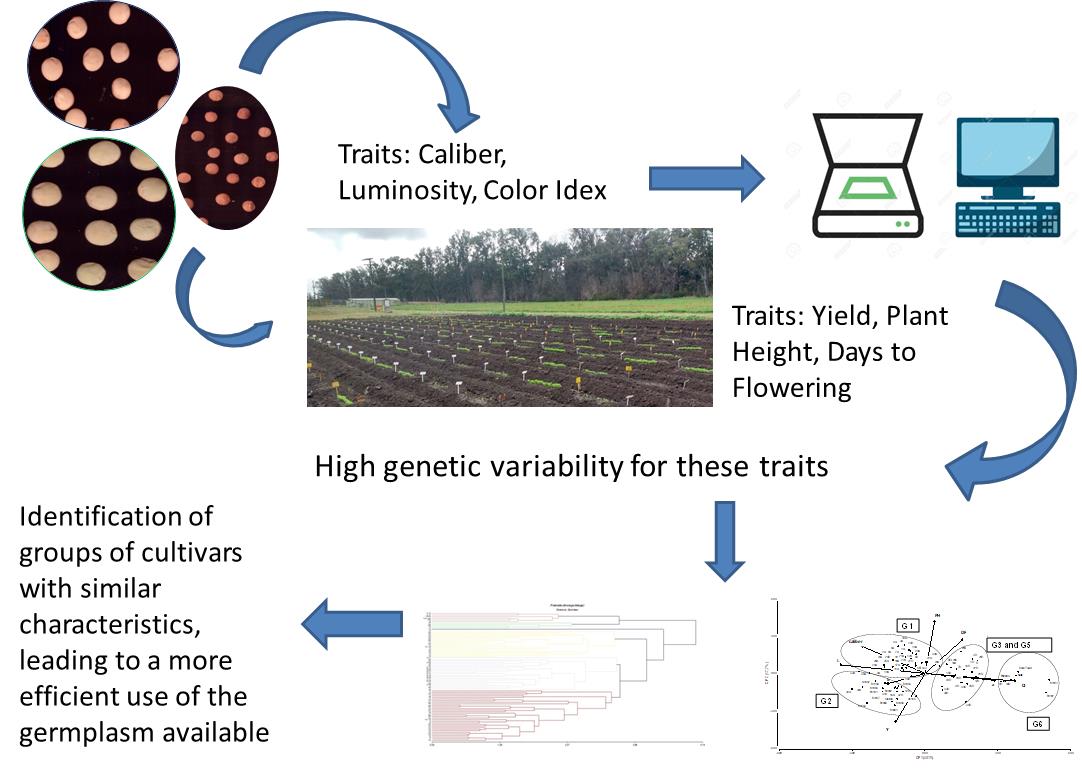Evaluation of a lentil collection (Lens culinaris Medik) using morphological traits and digital phenotyping
Palabras clave:
lenteja, fenotipado digital, caracterización morfológicaResumen

The objective of this work was to evaluate 81 lentil cultivars using morphological traits and seed characteristics using digital phenotyping. Caliber (C) and the color traits luminosity (L), color coordinates a and b, and color index (CI) were measured and analyzed with appropriate software; also yield (Y), plant height (PH) and days to flowering (DF) were measured. Highly significant differences between cultivars were present for all traits and high heritability in broad sense heritability (H2B) for C (97%), CI (94%), a (93%) and L and b (83%) were found, indicating high genetic variability for these traits. Digital phenotyping showed to be a powerful tool for germplasm characterization along with field evaluation of agronomical traits. Principal Component Analysis and Cluster Analysis allows de identification of differentiated groups of cultivars with similar characteristics, leading to a more efficient use of the germplasm available as commercial cultivars or as parents in a breeding program. Among these groups, group 1 had 32 cultivars with highest C and group 2 had 21 cultivars with higher Y.
Highlights
- Digital phenotyping showed to be a powerful tool for germplasm characterization along with field evaluation of agronomical traits.
- Principal Component Analysis and Cluster Analysis allows the identification of differentiated groups of cultivars with similar characteristics.
- Cultivar groups with similar characteristics allow more efficient use of germplasm.
Descargas

Descargas
Publicado
Cómo citar
Número
Sección
Licencia
Aquellos autores/as que tengan publicaciones con esta revista, aceptan las Políticas Editoriales.










.jpg)




